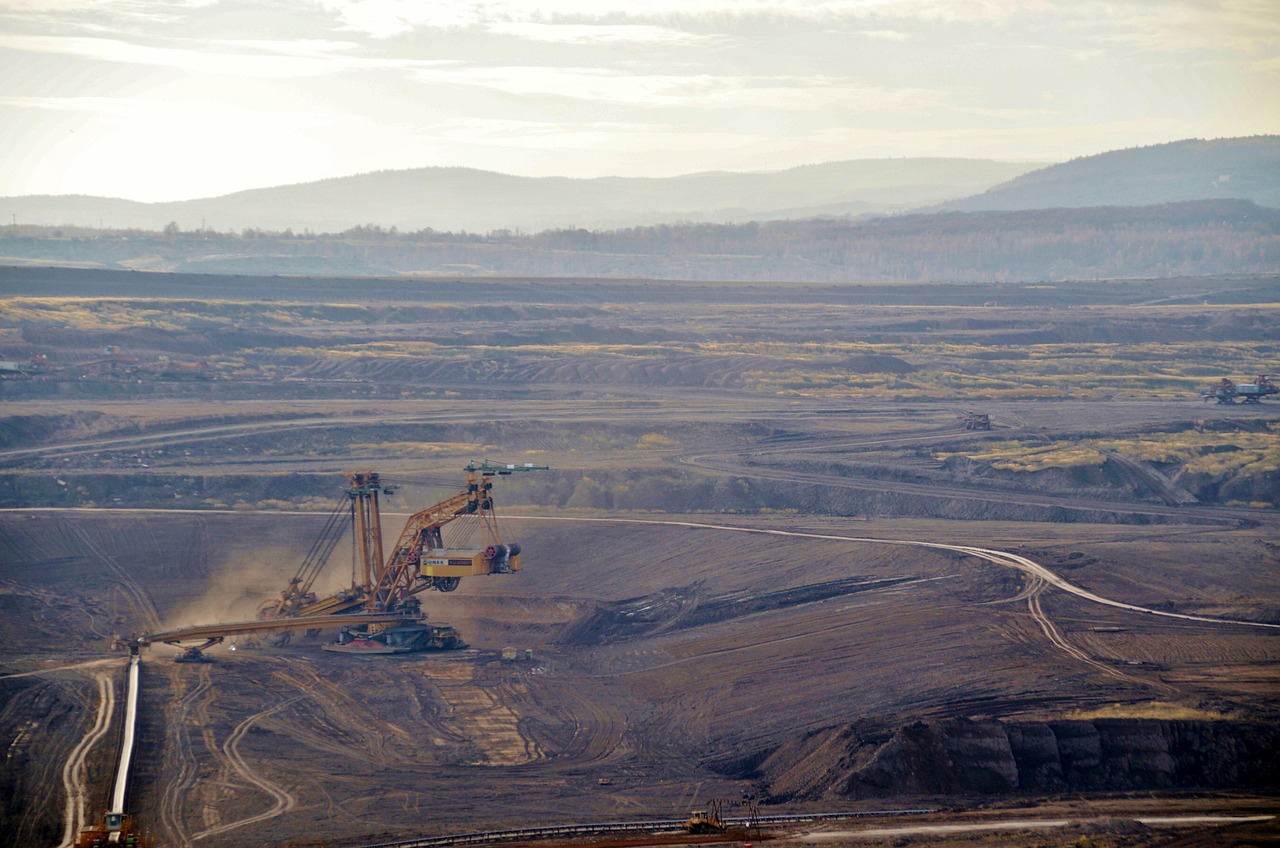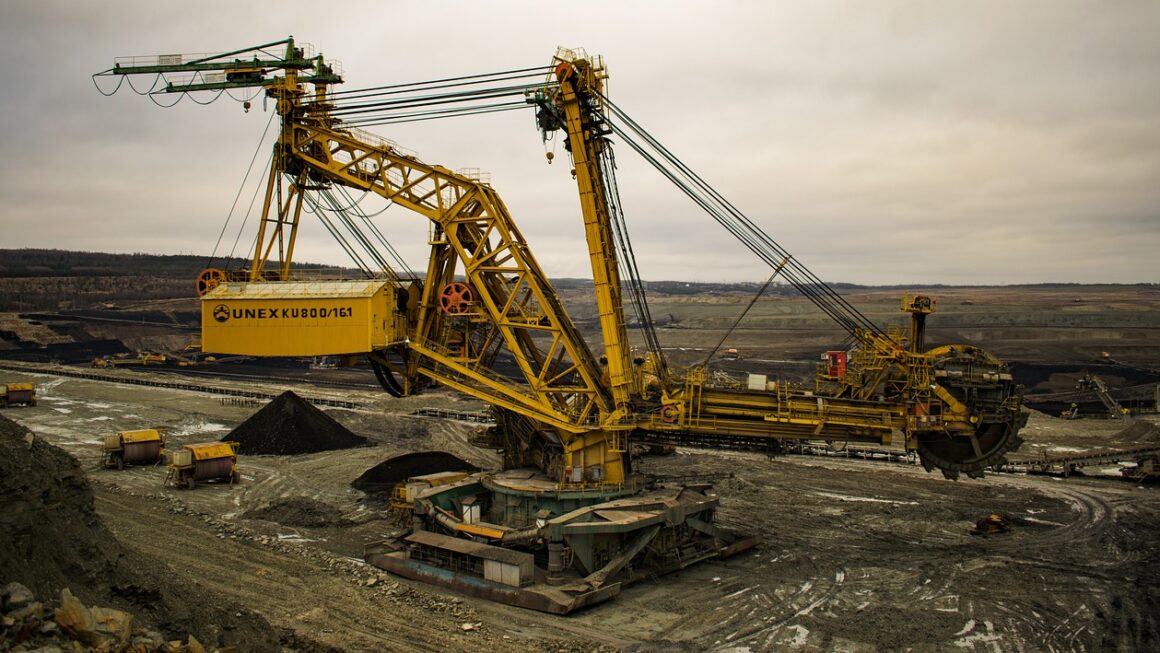Mining. The word conjures images of pickaxes, hard hats, and dark tunnels, but the reality of modern mining is far more complex and technologically advanced. Beyond simply extracting raw materials from the earth, mining plays a critical role in supplying the resources that fuel our modern world, from the copper in our electronics to the lithium in our batteries. This article dives into the multifaceted world of mining, exploring its methods, impact, and future.
What is Mining?
Mining is the process of extracting valuable minerals or other geological materials from the Earth, usually from an orebody, lode, vein, seam, reef or placer deposit. These materials are essential for a wide range of industries, including construction, manufacturing, energy, and technology. From the iron ore that forms the backbone of our buildings to the rare earth elements that power our smartphones, mining provides the foundation for modern society.
Types of Mining Methods
The method of mining employed depends on factors like the type of resource, its depth beneath the surface, geological conditions, and environmental regulations. Here are some common methods:
- Surface Mining:
Open-Pit Mining: Involves excavating from the surface downward in a large, open pit. Often used for large deposits of copper, iron ore, and coal. An example is the Bingham Canyon Mine in Utah, one of the world’s largest open-pit mines.
Strip Mining: Used to extract minerals located in shallow, horizontal seams near the surface. Topsoil and overburden are removed in strips to expose the mineral seam. Common for coal mining in regions like Appalachia.
Mountaintop Removal Mining: A controversial method where the tops of mountains are removed to access coal seams. It has significant environmental impacts but can be economically efficient.
Quarrying: Extraction of construction materials like stone, gravel, and sand from open pits or quarries.
- Underground Mining:
Room and Pillar Mining: A system where rooms are cut into the orebody, and pillars of ore are left standing to support the roof. Commonly used for coal and salt mining.
Longwall Mining: A highly automated method where a long wall of coal is extracted in a single slice. Provides high production rates but requires significant capital investment.
Shaft Mining: Accessing deep ore deposits through vertical shafts. Can be used for a variety of minerals, including gold, diamonds, and copper.
Drift Mining: Used where a mineral seam outcrops on a hillside, allowing access via a horizontal or slightly inclined tunnel (drift).
- In-Situ Leaching (ISL):
* This involves injecting a leaching solution into the orebody to dissolve the desired mineral and then pumping the solution to the surface for processing. Commonly used for uranium mining. ISL offers a reduced surface footprint compared to traditional mining methods.
The Mining Process: From Exploration to Reclamation
Mining involves a sequence of operations, each crucial for the successful and sustainable extraction of resources.
The Importance of Mining
Mining is an indispensable industry for the global economy. The raw materials extracted through mining are essential for manufacturing, construction, technology, and energy production. Without mining, we would not have the infrastructure, devices, or energy sources that power our modern world.
Economic Contributions
- Job Creation: Mining creates direct employment in exploration, extraction, processing, and support services. It also supports indirect employment in related industries, such as manufacturing, transportation, and construction.
- Revenue Generation: Mining generates significant revenue for governments through taxes, royalties, and fees. This revenue can be used to fund public services like education, healthcare, and infrastructure.
- Regional Development: Mining can stimulate economic development in remote or underserved regions by providing employment opportunities and attracting investment.
Supplying Critical Resources
- Metals: Iron ore for steel production, copper for electrical wiring, aluminum for transportation, and precious metals like gold and silver for jewelry and electronics.
- Energy Minerals: Coal for electricity generation, uranium for nuclear power, and oil sands for petroleum production.
- Industrial Minerals: Limestone for cement, phosphate for fertilizers, and salt for chemical production.
- Rare Earth Elements (REEs): Essential for manufacturing high-tech devices such as smartphones, wind turbines, and electric vehicle batteries. China currently dominates the REE market, which has prompted concerns about supply chain security.
Examples of Resource Use
- Copper: An average car contains approximately 50 pounds of copper wiring.
- Lithium: Essential for lithium-ion batteries used in electric vehicles and portable electronics. The growing demand for electric vehicles is driving significant growth in lithium mining.
- Iron Ore: Used to produce steel, which is essential for construction, manufacturing, and infrastructure development.
- Gold: Used in jewelry, electronics, and as a store of value.
Environmental Impact and Sustainability
Mining operations can have significant environmental impacts if not managed responsibly. These impacts can include habitat destruction, water and air pollution, and soil erosion. However, the mining industry is increasingly focused on sustainable practices to minimize these impacts and ensure the long-term viability of mining operations.
Environmental Challenges
- Habitat Destruction: Mining operations can destroy or fragment habitats, displacing wildlife and reducing biodiversity.
- Water Pollution: Mining can contaminate surface and groundwater with heavy metals, chemicals, and sediment. Acid mine drainage (AMD), caused by the oxidation of sulfide minerals, is a major source of water pollution.
- Air Pollution: Dust from mining operations can contribute to air pollution, affecting human health and the environment. Processing operations can release harmful gases and particulate matter into the atmosphere.
- Soil Erosion: Clearing vegetation and disturbing the soil during mining can lead to erosion and sedimentation of waterways.
Sustainable Mining Practices
- Environmental Impact Assessments (EIAs): Conducting thorough EIAs before starting mining operations to identify potential environmental impacts and develop mitigation measures.
- Reclamation and Rehabilitation: Restoring mined land to a stable and productive state, including replanting vegetation, controlling erosion, and treating contaminated water. Modern reclamation practices aim to create self-sustaining ecosystems.
- Water Management: Implementing water management strategies to minimize water use, prevent water pollution, and treat contaminated water. This includes using closed-loop water systems, treating AMD, and capturing and treating stormwater runoff.
- Waste Management: Minimizing waste generation, recycling waste materials, and safely disposing of mine waste. This includes using tailings management facilities (TMFs) designed to prevent tailings spills and seepage.
- Community Engagement: Engaging with local communities to address their concerns and ensure that mining operations benefit the community. This includes providing employment opportunities, supporting local businesses, and investing in community development projects.
Innovations in Sustainable Mining
- Electric Mining Equipment: Transitioning to electric mining equipment to reduce greenhouse gas emissions and improve air quality.
- Dry Stack Tailings: Using dry stack tailings disposal methods to reduce water consumption and the risk of tailings spills.
- In-Situ Recovery (ISR): Utilizing ISR methods, where applicable, to minimize surface disturbance and waste generation.
- Precision Mining: Employing advanced technologies like drones, sensors, and data analytics to optimize mining operations, reduce waste, and minimize environmental impacts.
The Future of Mining
The mining industry is undergoing a period of rapid transformation, driven by technological advancements, increasing demand for critical minerals, and growing concerns about sustainability. The future of mining will be characterized by increased automation, digitalization, and a greater focus on environmental and social responsibility.
Technological Advancements
- Automation: Automated mining equipment, such as autonomous trucks, drills, and loaders, can improve efficiency, reduce costs, and enhance safety.
- Digitalization: Using sensors, data analytics, and artificial intelligence (AI) to optimize mining operations, improve resource recovery, and enhance decision-making.
- Remote Sensing: Utilizing satellite imagery, drones, and LiDAR to monitor mining operations, detect environmental changes, and improve exploration efforts.
- 3D Printing: Using 3D printing to manufacture mining equipment, produce spare parts, and create customized solutions.
Meeting Future Demand
- Increased Demand for Critical Minerals: The transition to a low-carbon economy is driving increased demand for critical minerals like lithium, cobalt, nickel, and rare earth elements.
- Securing Supply Chains: Governments and companies are working to secure supply chains for critical minerals by diversifying sources, investing in domestic mining, and promoting recycling.
- Urban Mining: Extracting valuable materials from electronic waste (e-waste) and other urban sources. Urban mining can help reduce reliance on primary mining and recover valuable resources.
Skills for the Future
- Data Science and Analytics: The ability to collect, analyze, and interpret large datasets to optimize mining operations and improve decision-making.
- Automation and Robotics: Skills in operating and maintaining automated mining equipment and robotic systems.
- Environmental Science and Engineering: Expertise in environmental management, water treatment, and mine reclamation.
- Community Engagement and Social Responsibility: Skills in building relationships with local communities, addressing their concerns, and promoting sustainable development.
Conclusion
Mining is a vital industry that provides the raw materials necessary for modern society. While mining operations can have significant environmental impacts, the industry is increasingly focused on sustainable practices to minimize these impacts and ensure the long-term viability of mining operations. Technological advancements, increasing demand for critical minerals, and growing concerns about sustainability are driving a period of rapid transformation in the mining industry. By embracing innovation and prioritizing environmental and social responsibility, the mining industry can continue to play a crucial role in supporting global economic development while minimizing its impact on the planet.




